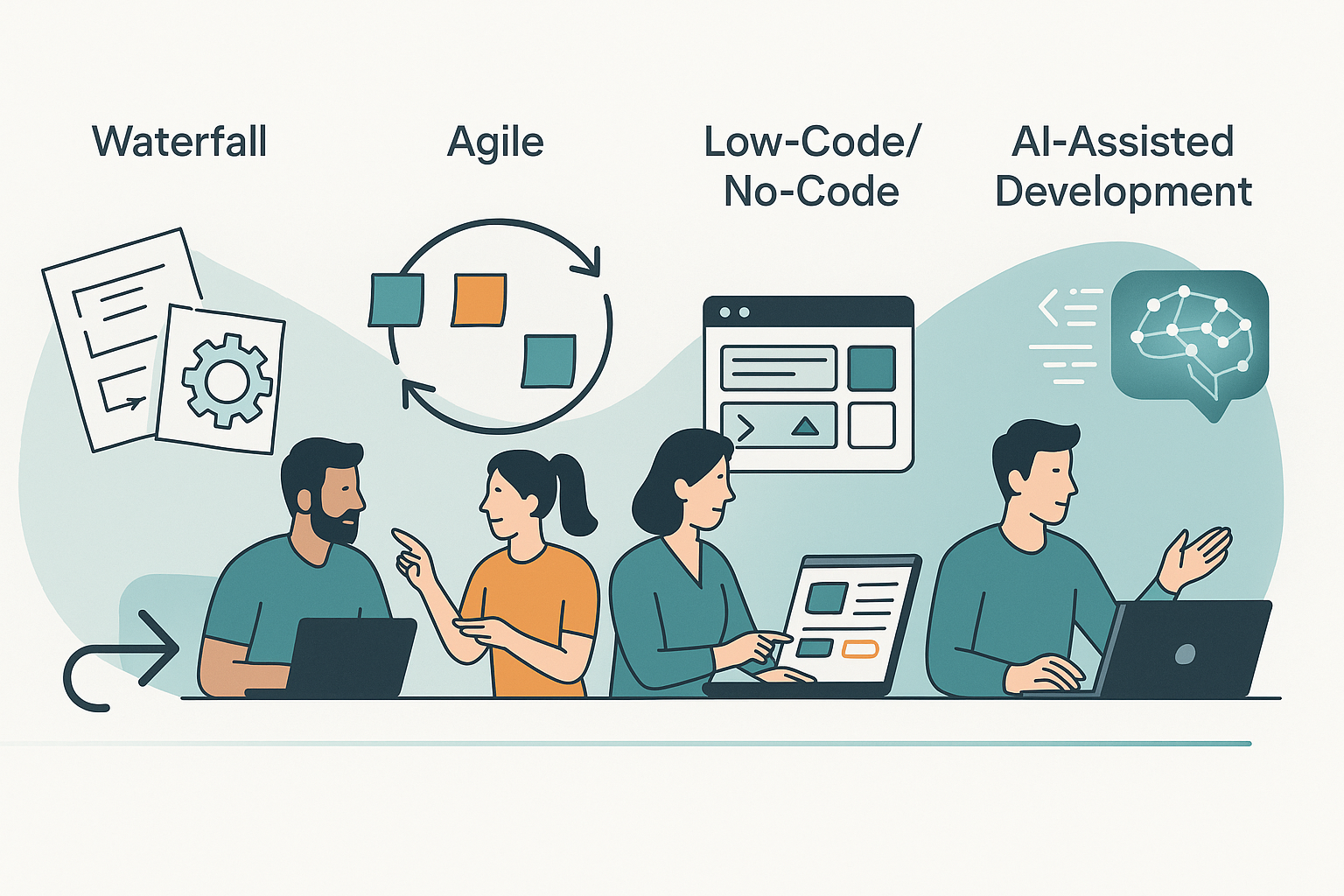From Waterfall to AI
The Shifts Reshaping Software Development
Software development has never been static. Each decade has brought new practices, tools, and philosophies that reshape how teams build, deliver, and scale digital products. What started as a rigid, documentation-heavy process has evolved into a dynamic, AI-assisted ecosystem where speed, adaptability, and accessibility define success.
At Soluntech, we’ve seen this transformation firsthand. Let’s walk through the four major shifts in software development—and why the latest one changes the game not just for developers, but for businesses everywhere.
1. The Waterfall Era: Structure Without Flexibility
In the early days, the Waterfall model dominated. Projects moved in strict phases—requirements, design, implementation, testing, and maintenance.
✓ Predictable on paper, but painfully slow in reality.
✗ If requirements changed mid-project (which they always did), costs ballooned, deadlines slipped, and teams struggled to adapt.
The rigidity of Waterfall taught the industry a hard truth: software is not built in straight lines.
2. The Agile Era: Iteration and Collaboration
The Agile Manifesto flipped software development on its head. Instead of locking scope upfront, Agile embraced change, iteration, and continuous delivery.
✓ Short sprints created working software faster.
✓ Teams collaborated closely with customers, ensuring solutions met real needs.
✦ Documentation was lighter, but outcomes were stronger.
Agile became the global standard because it matched the pace of innovation—flexible, adaptive, and customer-centered.
3. The Low-Code / No-Code Era: Software for Everyone
Next came the democratization of development. Low-code and no-code platforms empowered business leaders, SMB owners, and non-technical founders to build applications without writing extensive code.
✓ Faster prototyping and time-to-market.
✓ More stakeholders could directly participate in building tools.
✦ Development was no longer the exclusive domain of engineers.
This shift lowered barriers, allowing startups and small businesses to compete with enterprise players on agility and innovation.
4. The AI-Assisted Development Era: Guiding, Not Just Coding
Today, we stand in the AI-assisted era. Developers no longer start from a blank screen. Instead, AI helps generate code, test software, optimize performance, and even suggest solutions before problems appear.
✓ Speed is multiplied—what took weeks can take days.
✓ Quality improves as AI reduces repetitive errors.
✦ The role of developers shifts from writing every line to guiding AI, validating outputs, and ensuring alignment with business goals.
This isn’t the end of software engineering—it’s an evolution. Human creativity and strategy remain central, but AI handles the heavy lifting.
What This Means for Businesses
The story of software development is one of acceleration and empowerment.
→ Waterfall gave structure.
→ Agile gave adaptability.
→ Low-Code/No-Code gave accessibility.
→ AI gives intelligence and scale.
For businesses, this evolution means solutions can be delivered faster, at lower cost, and with greater alignment to real-world needs. The opportunity is no longer just about building software—it’s about building smarter, leaner, and with more confidence in the future.
Looking to move from idea to reality with speed and confidence? At Soluntech, we help founders and SMBs validate, design, and build software that truly fits their business. Book a free consultation with our team and start building smarter today.

